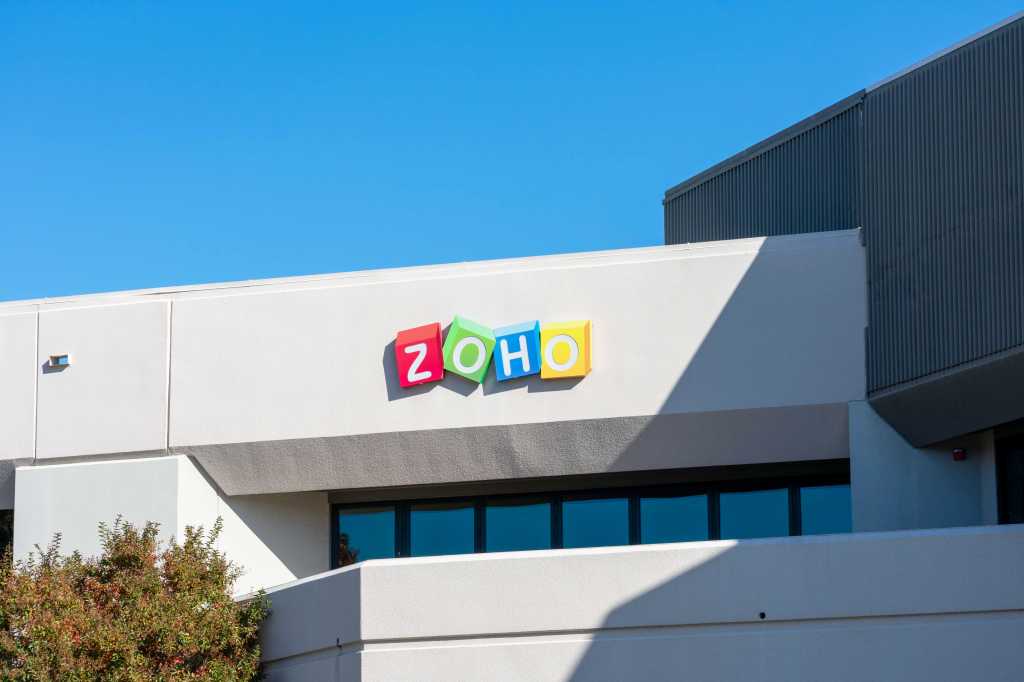The company’s full-stack AI strategy includes proprietary LLMs, speech recognition in English and Hindi, and a context-aware agent platform, marking a shift from SaaS to AI-first.

Zoho has taken a significant step forward in its AI roadmap with the launch of Zia LLM, its proprietary large language model (LLM) stack, alongside Automatic Speech Recognition (ASR) models in English and Hindi, a Zia Agent Studio for AI agent development, and a Model Context Protocol (MCP) server to manage context-aware agent interactions.
These launches align with Zoho’s longstanding goal of building foundational technology rather than depending on hyperscaler platforms.
“Our approach to AI is to make it contextually available within our products. We are building an AI stack, but it is an integral part of our existing technology stack, and are hyper-focused on solving for enterprise use cases,” said Ramprakash Ramamoorthy, director of AI research at Zoho. “Our AI stack includes AI capabilities such as Zia Agents and Ask Zia (conversational AI), AI tooling such as Zia Agent Studio (no-code agent builder), AI infrastructure (such as Zia LLM and MCP server, in addition to hardware (such as GPUs) and data centres. We have seen a 50% year-over-year growth of AI adoption among customers, which we attribute to us providing businesses with tangible results for their AI adoption. With Zia LLM and Agent Studio, we are providing businesses of all sizes with an extra intelligence layer that is not only going to help enhance their productivity but also optimise inference cost.”
With the launch of its in-house Zia LLMs and an agentic workflow platform, Zoho is signalling a transformation, from a strong SaaS stack to a fully integrated AI-first company, said Devroop Dhar, co-founder and MD at Primus Partners. “Zoho had been positioning itself as a customer-centric and privacy-first organization, but these announcements indicate a reinvention, where they are integrating AI into their core identity.”
A full-stack bet: Zoho’s in-house LLM
The Zia LLM, built entirely in-house on Nvidia’s AI-accelerated computing platform, is tailored specifically for business use cases such as structured data extraction, summarization, Retrieval Augmented Generation (RAG), and code generation.
The model family comprises three distinct models with 1.3 billion, 2.6 billion, and 7 billion parameters, each trained separately and optimised for different levels of contextual complexity.
This approach will allow Zoho to optimise the right model for the right user context, the company claimed. “Our LLM foundational models are optimised for specific business use cases, and because these are trained on fewer parameters, the inference cost is greatly reduced, passing on the value to the customer. We are also training 32 billion, 70 billion, and 100 billion models,” Ramamoorthy said.
“Right-sizing is a common strategy among model developers, who are releasing LLMs in multiple sizes to suit diverse use cases and on-device constraints. Zoho’s strategy of creating “right-sized” and efficient AI models will allow the company to make cost and compute-efficient offerings a key part of its value proposition,” said Mohit Agrawal, research director of AI & IoT at Counterpoint Research.
Zoho’s full-stack AI bet
Zoho’s approach with Zia LLM differs from enterprise AI rivals like Microsoft’s Copilot, Salesforce’s Einstein, and Google’s Gemini as the company owns the full AI stack. While most competitors integrate third-party foundation models, Zoho’s models are trained, deployed, and run entirely on its own infrastructure and cloud.
“Training your own models is technically complex, resource-intensive, and rare among software companies,” said Chirag Mehta, vice president and principal analyst at Constellation Research. “Zoho’s decision to build its own LLMs is rooted in its strategy to maintain independence and flexibility. It reduces dependencies on hyperscalers while still allowing integration when customers want it. Since outcomes from LLMs are tightly linked to context and data, Zoho’s early investment positions it to deliver differentiated, domain-specific intelligence where it already has deep experience.”
Instead of relying on OpenAI or Google APIs, Zoho’s in-house LLM infrastructure provides the company with full-stack control.
In-house, in-region
Unlike large LLMs that often rely on third-party cloud infrastructure, Zoho’s in-house Zia LLM has been deployed across Zoho’s data centres in the US, India, and Europe, ensuring the data never leaves Zoho’s ecosystem.
“Zoho’s investment in in-house LLMs reflects a long-term strategy centered on control, data sovereignty, and cost efficiency. For privacy-focused sectors like finance, healthcare, and government, Zoho’s approach of keeping data within its own ecosystem, via Zoho Cloud, offers a strong trust and compliance advantage, especially in regions with strict data residency laws such as the EU and India,” said Manish Rawat, analyst at TechInsights. He added that by avoiding reliance on third-party APIs such as OpenAI or Google Cloud, Zoho eliminates data-sharing risks and shields customers from rising inference or usage-based costs.
Two ASR models launched
Alongside its core LLM infrastructure, Zoho has launched two proprietary ASR models for speech-to-text conversion in English and Hindi, optimized for low compute environments. The company claims performance gains of up to 75% over comparable models in standard benchmarks, with additional Indian and European languages in the pipeline.
Zoho also expanded Zia Agent Studio, now fully prompt-based with low-code options, which now has over 700 pre-integrated actions from Zoho apps supported out of the box.
Zoho’s launch of the Zia LLM is a natural extension of its strategic direction, and the AI investments further enhance the company’s value proposition without departing from their brand, added Mehta.








